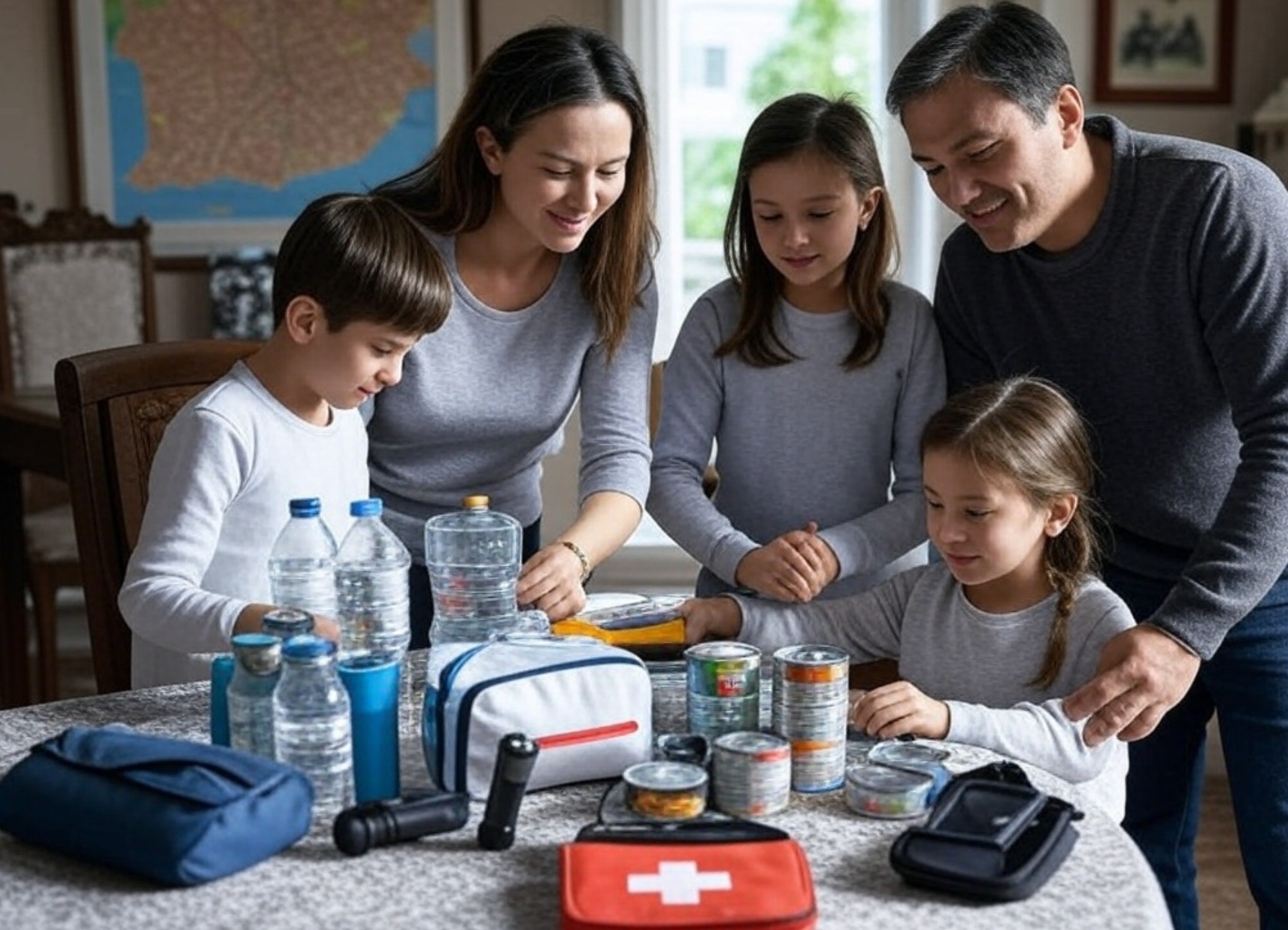Stay Prepared: Essential Earthquake Safety Tips and Emergency Kit Guide

Posted on manhattanexpress.com | April 25, 2025
Earthquakes, like the recent 6.2-magnitude tremor that shook Istanbul on April 23, 2025, serve as stark reminders of nature’s unpredictability. Living in a seismically active region like Turkey means preparation is not just wise—it’s essential. Here’s a comprehensive guide on earthquake safety measures and how to pack an emergency kit to ensure you’re ready when the ground shakes.
Earthquake Safety Measures: Before, During, and After
Before the Earthquake
Preparation can significantly reduce risks. Here’s what to do:
- Secure Your Space: Bolt heavy furniture like bookshelves to walls. Store heavy items on lower shelves to prevent them from falling. Use latches on cabinets to keep contents secure.
- Know Safe Spots: Identify sturdy furniture, like a solid table, to take cover under. Avoid areas near windows, mirrors, or tall furniture that could tip over.
- Plan and Practice: Create a family emergency plan. Know evacuation routes and designate a meeting point. Conduct regular earthquake drills to ensure everyone knows what to do.
- Learn Utilities: Know how to turn off gas, water, and electricity in case of damage. A gas leak during an earthquake can be deadly.
During the Earthquake
When the shaking starts, stay calm and act quickly:
- Drop, Cover, Hold On: Drop to your hands and knees, cover your head and neck under sturdy furniture, and hold on until the shaking stops. If no furniture is available, cover your head with your arms and stay against an interior wall, away from windows.
- Stay Indoors: Do not run outside during the shaking. Falling debris, glass, and power lines pose significant risks.
- If Outside: Move to an open area away from buildings, streetlights, and utility wires. Drop to the ground and stay there until the shaking stops.
- If Driving: Pull over to a safe spot away from overpasses, bridges, and power lines. Stay in the vehicle until the shaking stops.
After the Earthquake
The danger doesn’t end when the shaking stops:
- Check for Injuries: Provide first aid if needed. Do not move seriously injured people unless they’re in immediate danger.
- Inspect for Hazards: Look for fires, gas leaks, or damaged electrical wiring. If you smell gas, turn off the main valve and open windows. Evacuate if necessary.
- Expect Aftershocks: Be prepared for aftershocks, which can cause further damage. Avoid damaged buildings and areas with debris.
- Listen to Updates: Use a battery-powered radio to stay informed about emergency instructions from local authorities.
Building Your Earthquake Emergency Kit
An emergency kit, often called an earthquake bag, can be a lifesaver. Here’s what to include:
Essentials for Survival
- Water and Food: At least one gallon of water per person per day for three days. Pack non-perishable food like energy bars, canned goods, and dried fruits for at least three days. Include a manual can opener.
- First Aid Kit: Include bandages, antiseptic wipes, pain relievers, prescription medications, and a first aid manual.
- Flashlight and Batteries: Power outages are common. Pack a flashlight, extra batteries, or a hand-crank light.
- Whistle: To signal for help if trapped.
- Face Masks and Gloves: For dust and debris, especially if dealing with rubble.
Practical Tools
- Multi-tool: A Swiss Army knife or similar tool can help with various tasks.
- Blankets and Clothing: Pack thermal blankets, sturdy shoes, and extra clothes to stay warm and protected.
- Important Documents: Copies of IDs, insurance policies, and emergency contacts in a waterproof container.
- Cash: ATMs and card machines may not work. Keep small bills and coins handy.
Communication and Navigation
- Battery-Powered Radio: To receive updates if cell networks are down.
- Chargers and Power Bank: For your phone, which may be your lifeline to emergency services.
- Local Map: Mark evacuation routes and safe zones in case GPS fails.
Personal Items
- Hygiene Supplies: Include toilet paper, wet wipes, hand sanitizer, and feminine hygiene products.
- Comfort Items: For children, pack a toy or book to reduce stress.
Storage Tips
Keep your kit in a waterproof, easy-to-carry backpack. Store it in an accessible location, like near the front door or in your car. Check and refresh supplies every six months—replace expired food, water, and batteries.
Why Preparation Matters
The recent Istanbul earthquake injured over 150 people, many hurt while fleeing in panic. Proper preparation can prevent such injuries. Turkey, sitting on multiple fault lines like the North Anatolian Fault, experiences frequent seismic activity. A 2023 study by the Kandilli Observatory estimated a 64% chance of a magnitude 7.0 quake hitting Istanbul by 2030. Being ready isn’t just about surviving the quake—it’s about thriving in the aftermath.
Take action today. Share this guide with your loved ones, assemble your emergency kit, and practice your safety plan. Earthquakes don’t wait—are you ready?
For more safety tips and updates, visit manhattanexpress.com.




